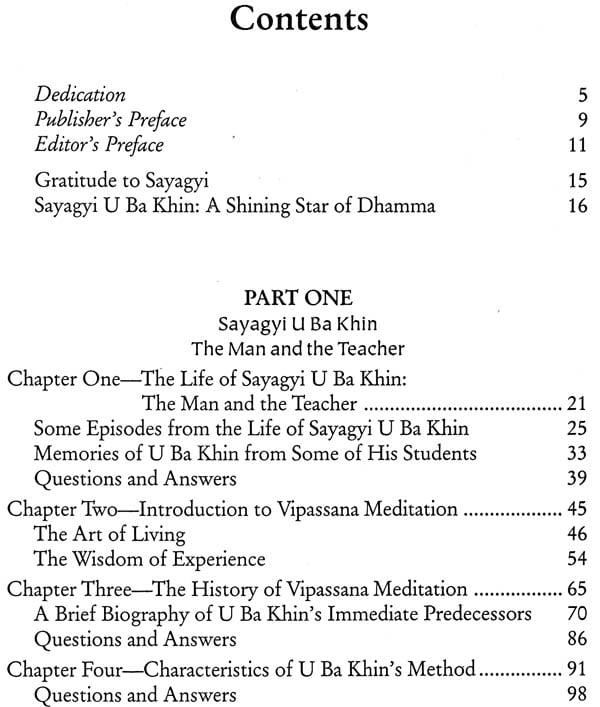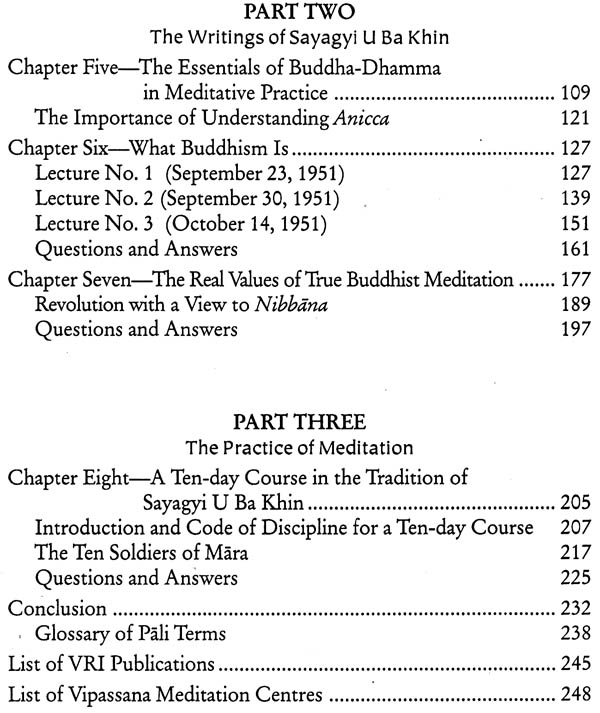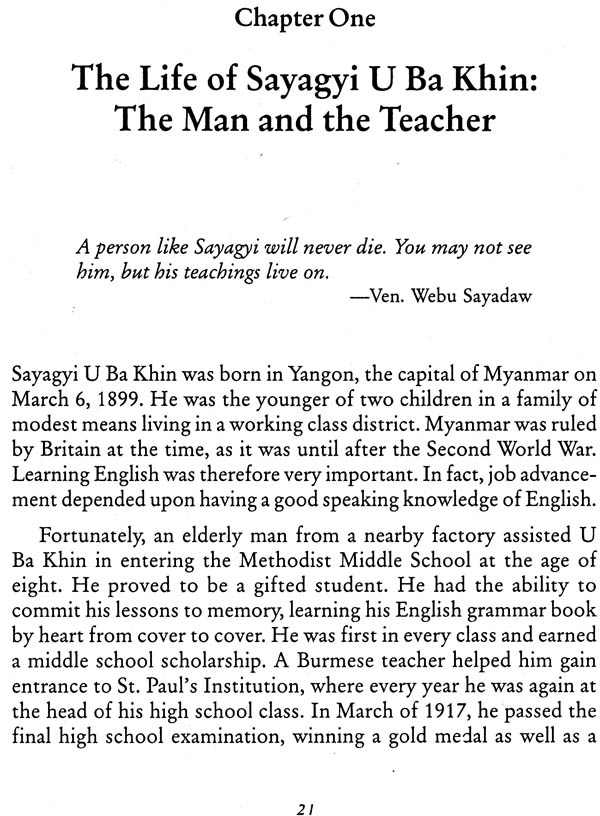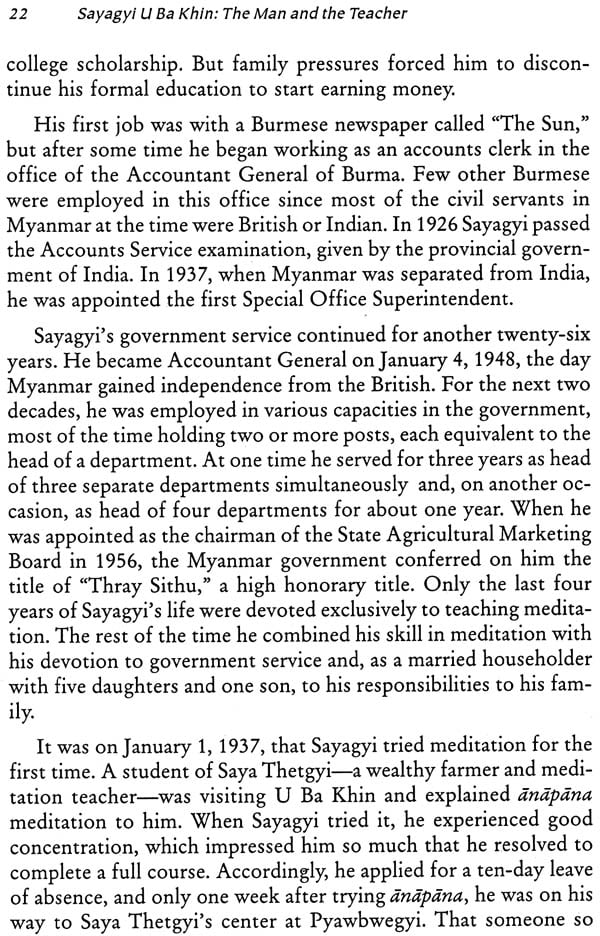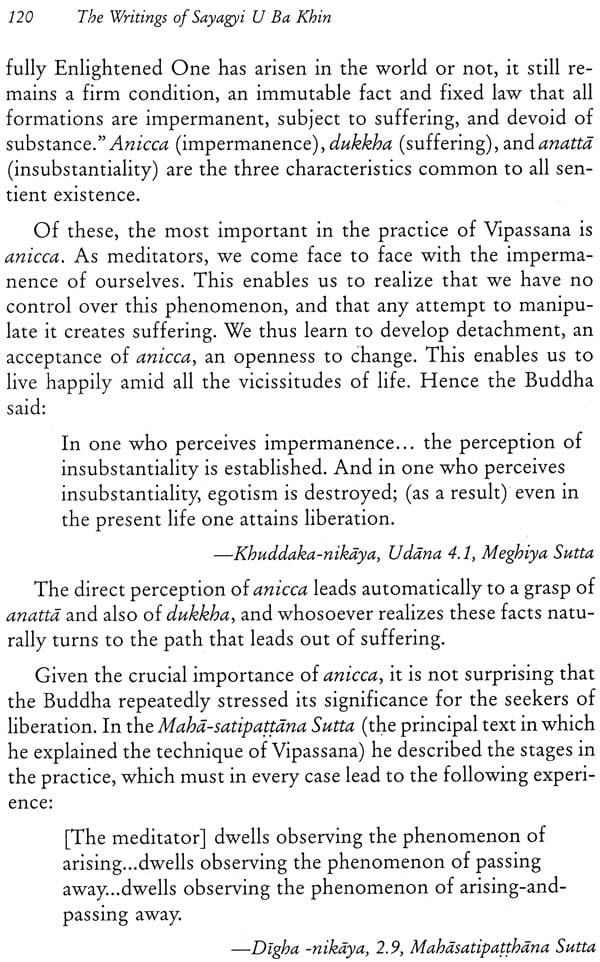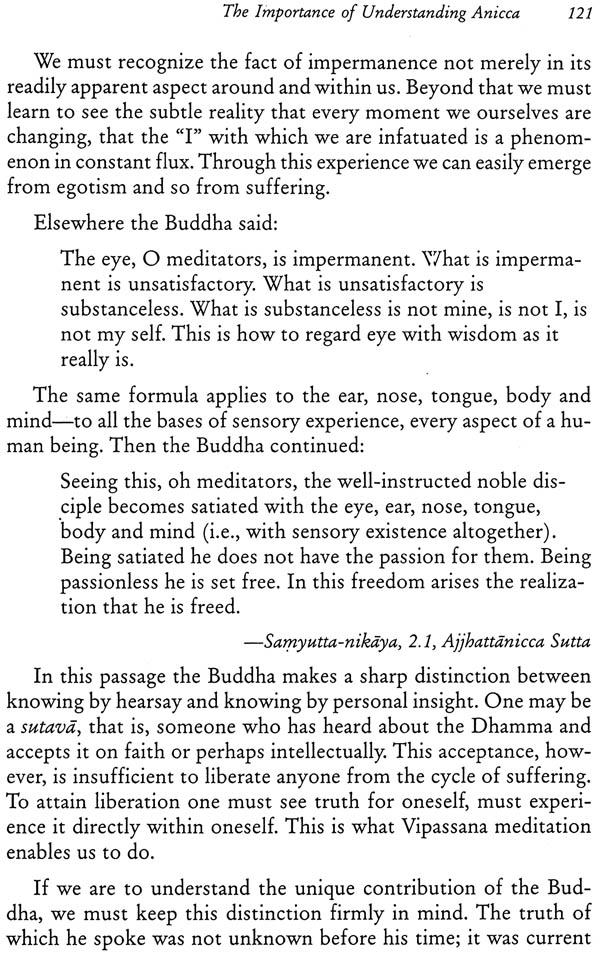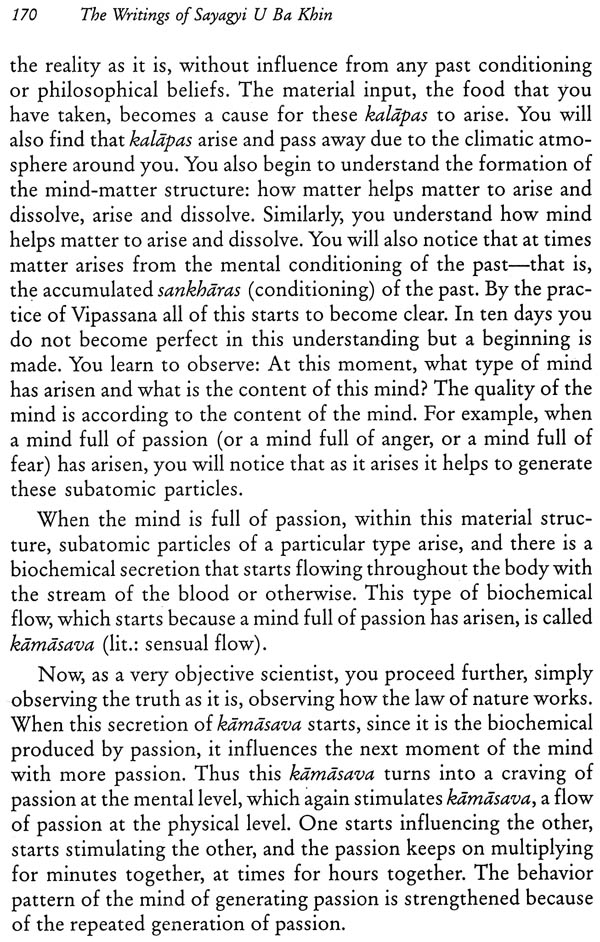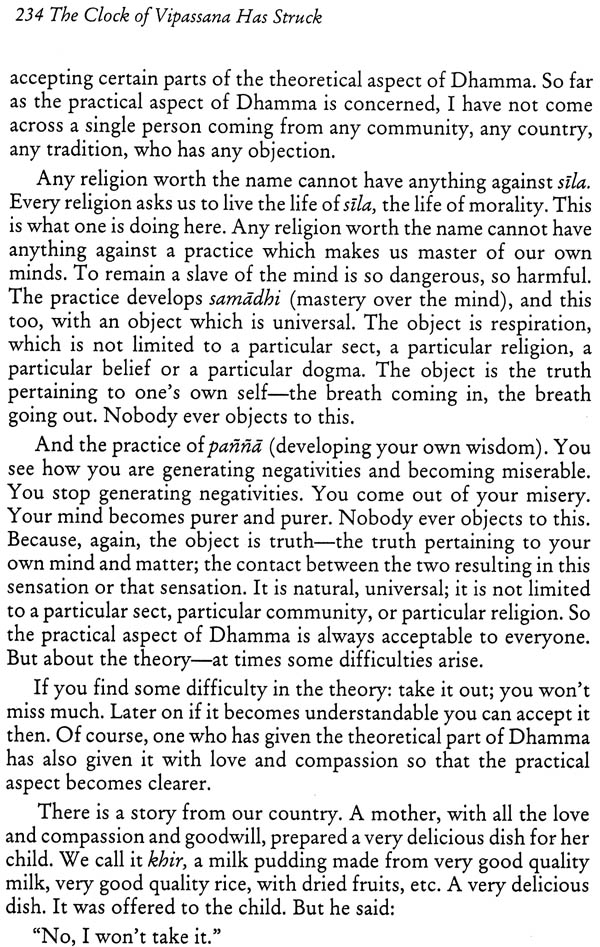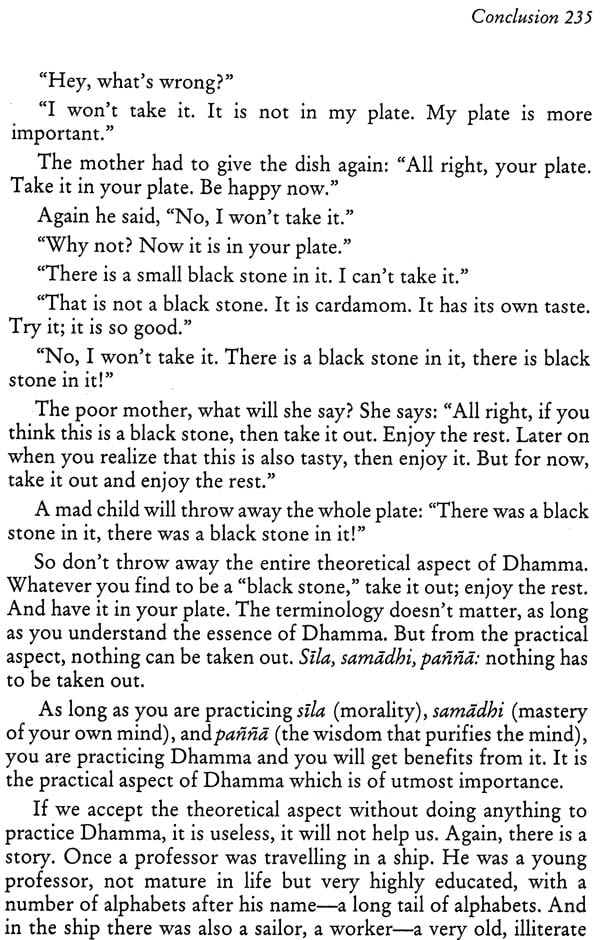
The Clock of Vipassana has Struck (A Tribute to the Saintly Life and Legacy of a Lay Master of Vipassana Meditation)
Book Specification
| Item Code: | NAW169 |
| Author: | Pierluigi Confalonieri |
| Publisher: | Vipassana Research Institute |
| Language: | English |
| Edition: | 2016 |
| ISBN: | 8174142355 |
| Pages: | 248 |
| Cover: | PAPERBACK |
| Other Details | 8.50 X 5.50 inch |
| Weight | 310 gm |
Book Description
Nearly three decades have elapsed since the death of the great meditation teacher, Sayagyit U Ba Khin, from Myanmar (formerly Burma). U Ba Khin, whose life spanned the first seventy years of this century, was one of the outstanding figures of his time. His accomplishments, in two usually incompatible fields, were singular: he was a master meditation student and teacher as well as a government official of tireless devotion and impeccable conduct. His service to the country of Myanmar was noteworthy, but his example to the citizens of the world is no less remarkable; for in a time of increasingly complex global crises, his life demonstrates a simple, powerful truth—that an individual of pure mind exerts a positive, corrective influence on society. U Ba Khin’s career was that of an ideal householder, combining unwavering dedication to Dhamma (the truth, the teaching) with unwearying commitment to public service.
Before he died on January 19, 1971, U Ba Khin was able to realize one of his most cherished dreams. He saw the ancient meditation technique of Vipassana, which had been preserved in his country for over two thousand years, returned to India, its land of origin. It was returned to its birthplace by U Ba Khin’s devoted student, S. N. Goenka. For the past two millennia, the sublime practice of Vipassana—the heart of the teaching of the Buddha—had been the province of only a small number of meditator monks and house- holders in a few Asian countries. Today, thousands of seekers have had the opportunity to receive the teaching and experience its benefits. These people come from scores of different countries, Eastern and Western, representing all religions, creeds, castes and communities.
Because of the pressing demands on his time, Sayagyi confined his teaching to a relatively small number of students who came to his meditation center in Yangon (formerly known as Rangoon). Now, in 1999, there are over fifty international centers—twenty- five in India, the remainder in fifteen other countries—which offer the technique of Vipassana taught by Sayagyi U Ba Khin, and carried on by his student, S. N. Goenka. (See the list of contact addresses at the end of this book.) In his teaching S$. N. Goenka has always placed primary emphasis on the actual practice of Dhamma—what is called, in Pali, the language of the Buddha, patipatti. It is only through practice that one can have the direct experience which will take one to the final goal of freedom from all suffering. In this approach, Goenkaji follows the example of his teacher, who always insisted that Dhamma must be applied if it is to have real meaning.
However, there is another important aspect of Dhamma: pariyatti—understanding at the theoretical, intellectual level. This is helpful to inspire one to undertake the actual practice of meditation, and to elucidate questions that may arise while one is practicing. Unfortunately, the amount of material in English which can provide a suitable theoretical foundation for a student of Vipassana has not kept pace with the growth in the availability of the practice of Dhamma. This collection of historical and theoretical research has been compiled to respond to this need and to shed light on various aspects of Vipassana meditation.
The Clock of Vipassana Has Struck is a tribute to Sayagyi U Ba Khin and, indeed, its contents are an outgrowth of his life’s work.
This collection 1s offered primarily to inspire the practice of Dhamma, for those who have taken courses as well as those who have no experience in Vipassana meditation. It should not, however, be used as a teaching manual for the technique. Attending a ten-day course under the careful guidance of a qualified, authorized teacher is essential to properly establish oneself in the practice of Vipassana. Those who feel inspired by reading this book to try the technique of Vipassana as taught by S. N. Goenka in the tradition of Sayagyi U Ba Khin can refer to the list of Vipassana centers at the end.
All of the work of Sayagyi and Goenkaji, all the present world- wide Dhamma activity; has only one purpose: to help people find the way out of suffering. The technique which provides this path was lost in India, and unknown in most of the rest of the world for many centuries. It .s now available once again. Sayagy! believed in the ancient prophecy that 2,500 years alter the time of the Buddha, Dhamma would arise anew and spread around the world. This be- lief is being verified. As he used to say, "The clock of Vipassana has struck."
Since the practice of Vipassana meditation is the essence of the Buddha’s teachings and the most important contribution of U Ba Khin, with this collection we wish to accomplish two goals:
1) To describe the life and personality of U Ba Khin, as a man and as a teacher of meditation, by narrating episodes of his life and reminiscences from people who met him and to underline the importance of his contribution to the dissemination of this technique.
2) To delineate the essential characteristics of the practice of this technique of meditation by presenting U Ba Khin’s writings, along with commentaries there on.
The first part of the book recounts the most important details and some significant episodes from U Ba Khin’s life, as narrated primarily by S. N. Goenka, his disciple, and the Vipassana Research Institute (located adjacent to Dhammagiri, the meditation center in Igatpuri, India).
The second part of the book introduces Sayagyi’s writings and includes an important section of questions and answers with S. N. Goenka, explaining the essential principles of the technique taught by him and his teacher.
The third part describes in detail how Vipassana meditation courses are organized, outlines how the technique is taught and gives information about where it is possible to learn it.
The book ends with a simple glossary of the most important Pali words related to the practice of Vipassana.
**Contents and Sample Pages**
